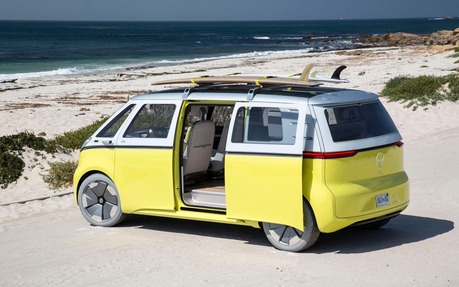The Volkswagen e-Golf will be Replaced by a New Family of Electric Vehicles
At the 2017 Frankfurt Auto Show, we had the opportunity to talk electrification with the folks at Volkswagen, especially regarding the limited quantity of e-Golf models offered in Canada.
We learned that the e-Golf’s days are counted, since it won’t return when the next-generation Volkswagen Golf will appear. It will retire in two or three years to make way for a whole new family of electric vehicles sold with the “I.D.” badge.
- Also: The New I.D. CROZZ: A Prelude to Volkswagen’s First Electric SUV
- Also: 2017 Volkswagen e-Golf: Watch Out, Bolt
According to Jürgen Stackmann, responsible for sales and marketing at Volkswagen, this new division will see the light of day in 2020, with the arrival of its first model called the I.D., a car similar in size to the Nissan LEAF, and that will directly replace the e-Golf. Unlike the latter, the I.D. will be fully engineered based on its electric powertrain. The absence of a transmission and many other mechanical components will allow the automaker to exploit the specifics of this new model family.
Other models will follow quickly thereafter, such as the I.D. CROZZ, a compact SUV, and the I.D. BUZZ, an unusual vehicle inspired by the shape of the Volkswagen BUDD-e concept. Five Volkswagen models will be offered in the I.D. subbrand by 2025, all assembled on a new MEB platform dedicated to fully electric vehicles. According to Stackmann, all these models will also be able to integrate various levels of autonomous driving technologies.

Volkswagen seeks to become the world leader in electrification
During his speech in front of the media at the Frankfurt show, Matthias Müller, president of the Volkswagen Group, presented the company’s electrification plans. After being the leader in diesel engines, the automaker now wants to become the world leader in electric vehicles, with a colossal $20 billion investment.
Dubbed Roadmap E, Volkswagen’s plan will include electrification, in various levels, of its whole line-up of models by 2030, which will apply to the some 300 models sold around the world by the VW Group. To achieve this, Volkswagen will invest heavily in battery production, and will need the equivalent of four “Gigafactories” for its own needs. It’s a production equivalent to what’s currently needed for the entire production of electric vehicles, all makes combined. That amounts to 50 fully electric models and 30 plug-in hybrids by 2025.
